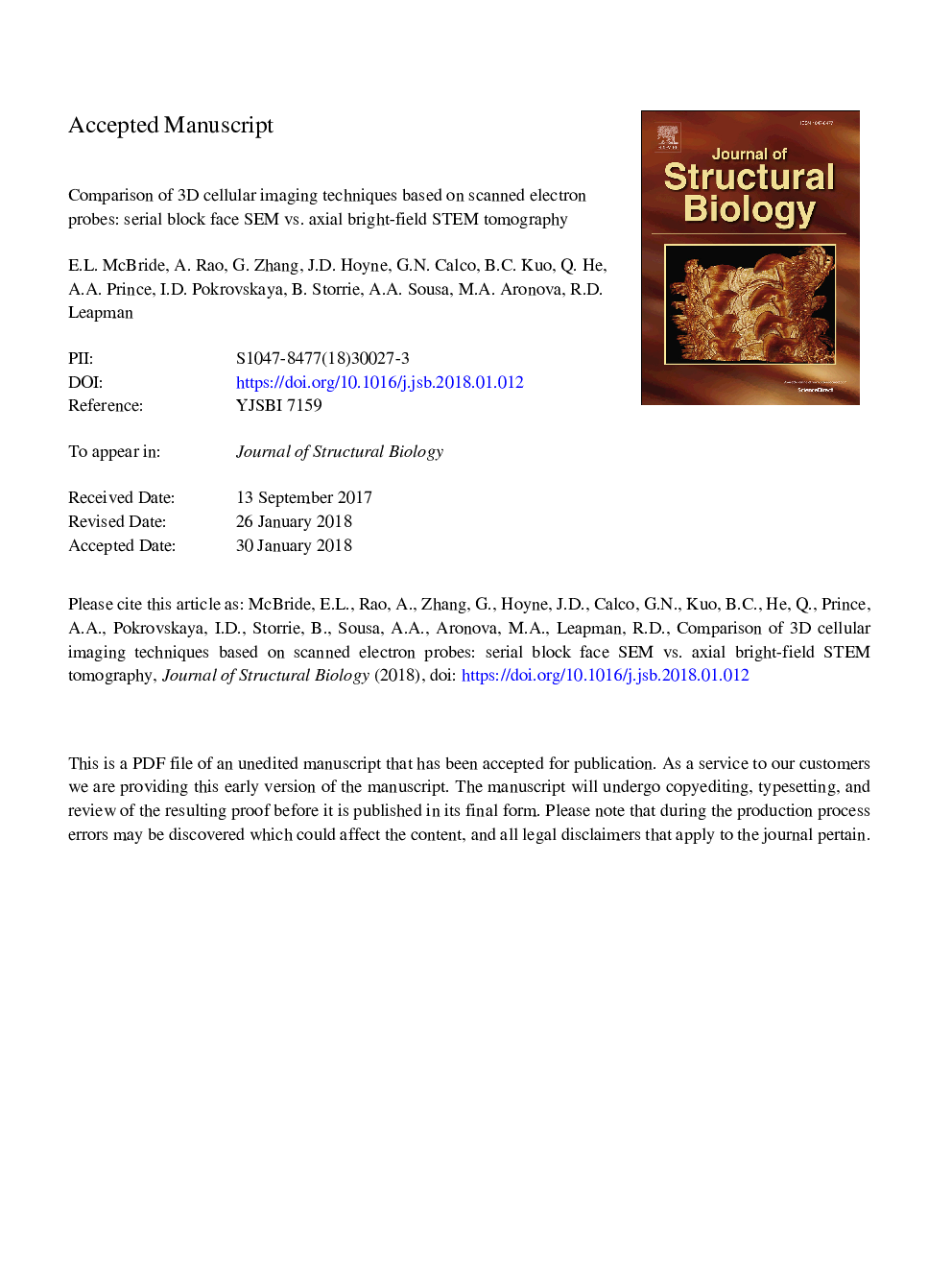| Article ID | Journal | Published Year | Pages | File Type |
|---|---|---|---|---|
| 8648194 | Journal of Structural Biology | 2018 | 54 Pages |
Abstract
Microscopies based on focused electron probes allow the cell biologist to image the 3D ultrastructure of eukaryotic cells and tissues extending over large volumes, thus providing new insight into the relationship between cellular architecture and function of organelles. Here we compare two such techniques: electron tomography in conjunction with axial bright-field scanning transmission electron microscopy (BF-STEM), and serial block face scanning electron microscopy (SBF-SEM). The advantages and limitations of each technique are illustrated by their application to determining the 3D ultrastructure of human blood platelets, by considering specimen geometry, specimen preparation, beam damage and image processing methods. Many features of the complex membranes composing the platelet organelles can be determined from both approaches, although STEM tomography offers a higher â¼3â¯nm isotropic pixel size, compared with â¼5â¯nm for SBF-SEM in the plane of the block face and â¼30â¯nm in the perpendicular direction. In this regard, we demonstrate that STEM tomography is advantageous for visualizing the platelet canalicular system, which consists of an interconnected network of narrow (â¼50-100â¯nm) membranous cisternae. In contrast, SBF-SEM enables visualization of complete platelets, each of which extends â¼2â¯Âµm in minimum dimension, whereas BF-STEM tomography can typically only visualize approximately half of the platelet volume due to a rapid non-linear loss of signal in specimens of thickness greater than â¼1.5â¯Âµm. We also show that the limitations of each approach can be ameliorated by combining 3D and 2D measurements using a stereological approach.
Related Topics
Life Sciences
Biochemistry, Genetics and Molecular Biology
Molecular Biology
Authors
E.L. McBride, A. Rao, G. Zhang, J.D. Hoyne, G.N. Calco, B.C. Kuo, Q. He, A.A. Prince, I.D. Pokrovskaya, B. Storrie, A.A. Sousa, M.A. Aronova, R.D. Leapman,
